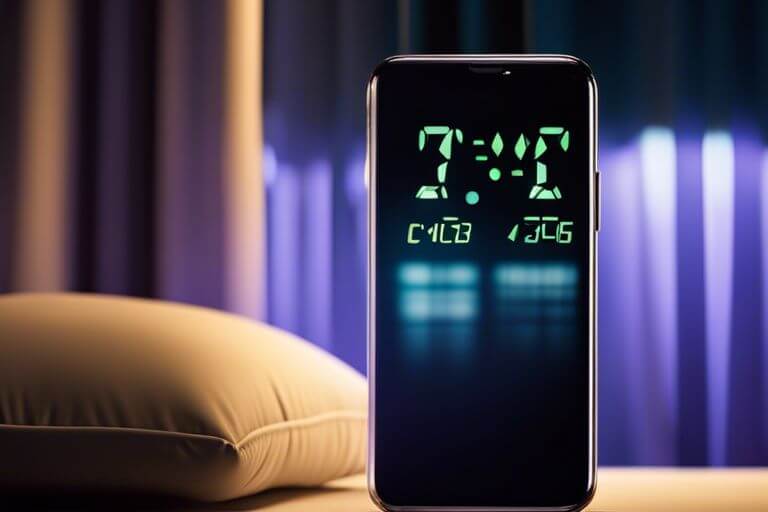The Dark Side of Light – How to Manage Light Exposure for Better Sleep
Over exposure to artificial light has become a pervasive problem in modern society, disrupting our natural sleep-wake cycle and leading to a host of health issues. From smartphones to streetlights, we are constantly bombarded with blue light that affects our ability to fall asleep and stay asleep. Managing our light exposure is crucial for ensuring a restful night’s sleep and overall well-being. In this blog post, we will explore the impacts of light on sleep quality and provide practical tips on how to create a sleep-friendly environment to optimize your restorative rest.
The Dark Side of Light – How to Manage Light Exposure for Better Sleep
What Is Blue Light?
Any visible light with a wavelength between approximately 380 and 500 nanometers is considered blue light. Blue light is known to have a higher energy output compared to other wavelengths, making it more stimulating to the brain and affecting our circadian rhythm.
Sources of Blue Light Exposure
Light exposure to blue light primarily comes from electronic devices such as smartphones, tablets, computer screens, and LED lighting. Blue light exposure from screens, especially before bedtime, can disrupt the production of melatonin – the hormone responsible for regulating sleep-wake cycles.
Another significant source of blue light exposure is natural sunlight. While sunlight is crucial for maintaining a healthy sleep-wake cycle, excessive exposure during late evening or night can interfere with melatonin production and disrupt sleep patterns.
The Health Consequences of Overexposure to Light
Disruption of Circadian Rhythms
Health experts have long warned about the impact of overexposure to light on our circadian rhythms, our body’s internal clock that regulates the sleep-wake cycle. It is crucial to understand that excessive exposure to light, especially blue light emitted from screens, in the evening can disrupt the production of melatonin, the hormone responsible for signaling our bodies that it’s time to sleep. This disruption can lead to difficulty falling asleep and poor sleep quality, ultimately affecting our overall health and well-being.
Potential for Long-Term Health Issues
Issues arise when overexposure to light becomes a chronic habit. Research indicates that ongoing disruption of circadian rhythms due to excessive light exposure can have long-term health implications. It has been linked to an increased risk of developing serious health conditions such as obesity, diabetes, cardiovascular diseases, and even certain types of cancer. This highlights the importance of managing our exposure to light, especially artificial light, to safeguard our health in the long run.
Strategies for Better Light Management
Reducing Blue Light Exposure in the Evening
One of the key strategies for better light management is reducing blue light exposure in the evening. Blue light, emitted by screens and energy-efficient LED lights, can disrupt the production of melatonin, the hormone responsible for regulating sleep. Limit screen time before bed and consider using blue light filters on electronic devices to minimize this effect.
Implementing Healthier Lighting Solutions
Exposure to artificial lighting in the evening can also impact our sleep-wake cycle. Implementing healthier lighting solutions can help mitigate these effects. For instance, consider using warmer, less blue-enriched light bulbs in the evening to signal to your body that it’s time to wind down. Dimmer switches and smart lighting systems can also be useful tools to adjust the lighting intensity according to the time of day.
Practical Tips for Healthier Sleep Habits
Now, when it comes to managing light exposure for better sleep, there are some practical tips you can follow to improve your sleep habits.
Creating a Sleep-Inducing Environment
On creating a sleep-inducing environment, it is important to keep your bedroom dark and cool. Use curtains or blinds to block out any outside light, and set your thermostat to a comfortable temperature. Additionally, remove any electronic devices that emit light, such as TVs or alarm clocks with bright displays, to create a calm and relaxing space for sleep.
Mindful Use of Technology Before Bedtime
Healthier sleep habits involve being mindful of your technology use before bedtime. Limit your screen time at least an hour before bed as the blue light emitted from screens can disrupt your circadian rhythm. Instead, engage in relaxing activities like reading or listening to calming music to prepare your mind for sleep.
Plus, consider using blue light filters on your devices or wearing blue light-blocking glasses to reduce the impact of screens on your sleep quality. Creating a technology-free bedtime routine can significantly improve your ability to fall asleep and stay asleep throughout the night. Note, better sleep starts with healthier habits.
Summing up
Ultimately, managing light exposure is crucial for better sleep. By understanding the impact of light on our circadian rhythms and making simple adjustments to our environment and habits, we can positively influence our sleep quality. From minimizing blue light exposure in the evening to embracing natural light in the morning, these practices can help regulate our internal clock and improve our overall well-being. Prioritizing a healthy relationship with light can lead to more restful and rejuvenating sleep, creating a foundation for improved mood, cognition, and physical health.

